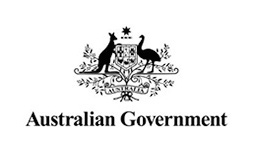Inclusion at the heart of discovery science

Whether it is in research or academic leadership, Dr Izzy Jayasinghe, the incoming Head of UNSW Sydney’s Department of Molecular Medicine, is breaking down barriers that limit scientific research.
With a focus on the molecular signals in driving cardiovascular function, Izzy and her team are developing new microscopy tools to visualise these critical signalling events in heart muscle cells. In particular, she is investigating the relationship between cardiac performance and the structure of key proteins and molecular machines involved.
“I feel like my mission over the past decade and a bit has been to provide some kind of structural context: to tease apart how much of that function – the calcium signals that you see across the cells and between cells – is determined by the structure and organisation of the calcium channel proteins,” Izzy says.
Single-molecule imaging techniques – such as stochastic optical reconstruction microscopy (STORM) and photoactivated localization microscopy (PALM) – have the power to resolve the molecular building blocks making up cells. But the high cost of the equipment as well as the need for specialized optical training has kept super-resolution microscopy out of reach for many researchers, especially those in the Life Sciences.
Expanding tissues for a single-molecule perspective
To remove some of the barriers to acquiring super-resolution insights into cells and tissues, Izzy’s team is developing tools around a new technology called expansion microscopy.
While traditional single-molecule microscopy relies on an understanding of physics to control the optical properties required to resolve molecular details, expansion microscopy makes molecular structures visible using standard microscopes, by swelling up the object to be imaged.
To prepare the sample for expansion microscopy, the tissues (or cells) labelled with fluorescent dyes are embedded in a hydrogel. With those fluorescent tags fixed in place by chemical crosslinking, biological sample is then digested and cleared away, leaving behind a precise imprint in the gel. By adding water or other solutions, the gel mould can be expanded more than a thousand-fold.

“It’s also much better than the existing single-molecule techniques for looking at 3-D shapes. We use expansion microscopy for looking at the 3-dimensional complexity of proteins and domains, particularly in the heart. In heart failure and some types of heart disease, these structures change shape,” says Izzy.
“We are very invested in making microscopy accessible. I see my role, at the moment, as someone who opens doors for people who are not traditional microscopists, to come and use these tools. We have clinicians, environmental researchers, and researchers working with the European Space Agency, all interested to try it. We want to develop tools that they can apply.”
Inclusive leadership
Currently based in the United Kingdom, Izzy will join UNSW in October this year as Head of the Department of Molecular Medicine, in the School of Biomedical Sciences at UNSW Medicine and Health.
Being inclusive is at the core of Izzy’s philosophy. In her research career, she is most proud of her achievements as a mentor to young researchers, ensuring that their training opens up opportunities for them, and that researchers are not left behind. As an academic leader, she has collected data about inequality in her workplace and helped put in place structures that address these issues.
“I’m currently the Deputy Head of the Molecular and Cellular Biology Division at Sheffield University. I took on this role because I had a real interest in setting the culture of the work environment,” says Izzy.
Working with other advocates, Izzy has also been able to influence government and funding bodies to address wider gender and racial inequality in the way that grants have been funded in the UK. She says that getting an inquiry opened on this matter was a real victory, and she hopes to bring her learnings with her to UNSW.
On a personal level, one of the things that drew her to the position in the Department of Molecular Medicine was having met the late Professor Katharina Gaus, who originally established the team of group leaders who now make up this new department.
“I had a glimpse into the group back in 2014. So, I always knew that in that part of the world, there was a good group of people. It’s a group of people who I had always aspired to work with,” says Izzy.


